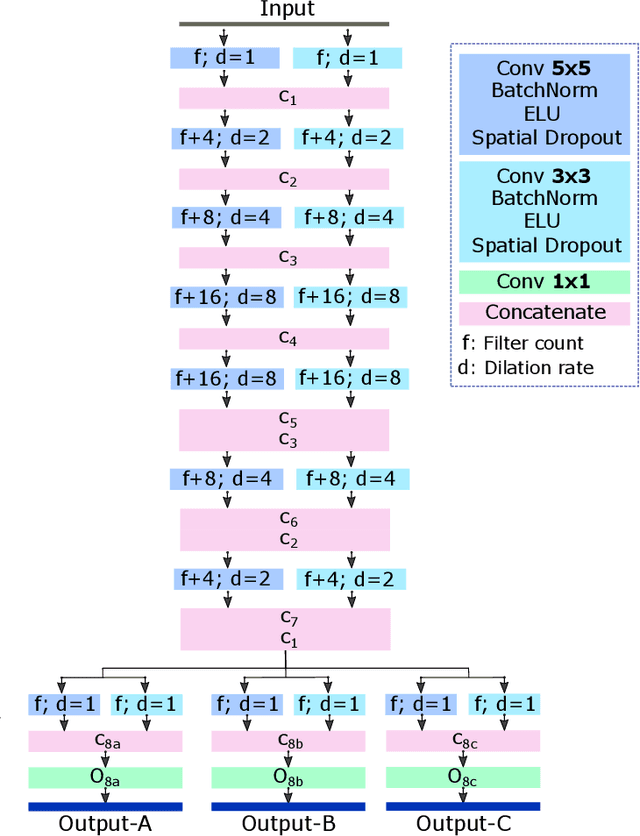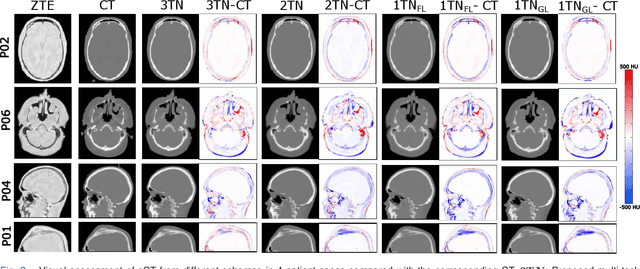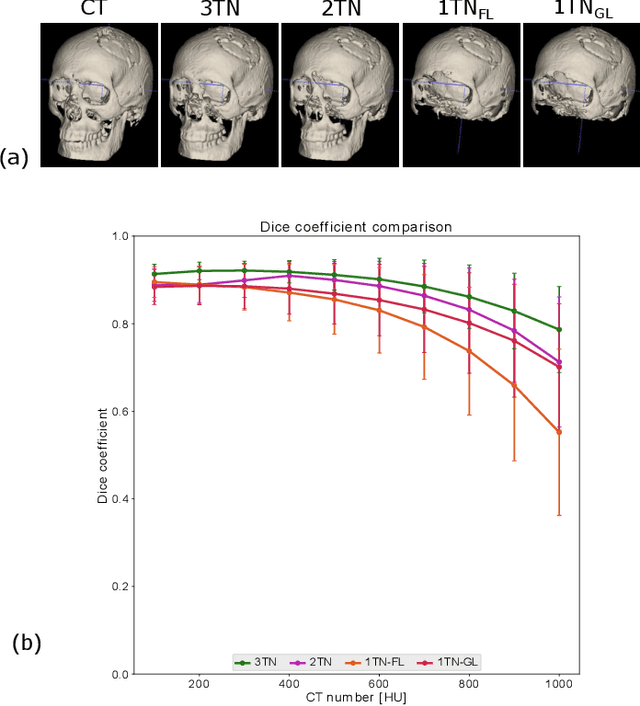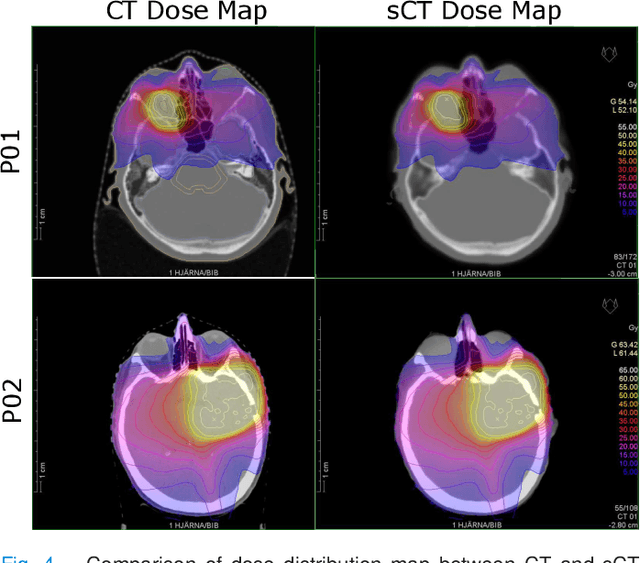Vikas Chauhan
Region of Interest focused MRI to Synthetic CT Translation using Regression and Classification Multi-task Network
Mar 30, 2022



Abstract:In this work, we present a method for synthetic CT (sCT) generation from zero-echo-time (ZTE) MRI aimed at structural and quantitative accuracies of the image, with a particular focus on the accurate bone density value prediction. We propose a loss function that favors a spatially sparse region in the image. We harness the ability of a multi-task network to produce correlated outputs as a framework to enable localisation of region of interest (RoI) via classification, emphasize regression of values within RoI and still retain the overall accuracy via global regression. The network is optimized by a composite loss function that combines a dedicated loss from each task. We demonstrate how the multi-task network with RoI focused loss offers an advantage over other configurations of the network to achieve higher accuracy of performance. This is relevant to sCT where failure to accurately estimate high Hounsfield Unit values of bone could lead to impaired accuracy in clinical applications. We compare the dose calculation maps from the proposed sCT and the real CT in a radiation therapy treatment planning setup.
PhD Thesis on Code Modulated Interferometric Imaging System using Phased Arrays
Jul 19, 2021



Abstract:This work presents techniques which can allow low-cost phased-array receivers to be reconfigured as interferometric imagers and thereby reducing cost. Since traditional phased arrays power combine incoming signals prior to digitization, orthogonal code-modulation is applied to each incoming signal using phase shifters within each front-end. These code-modulated signals can then be combined and processed coherently through a shared hardware path. Visibility functions can be recovered through squaring and code-demultiplexing operations. The proposed system modulates incoming signals but demodulates desired correlations. Firstly, we present the operation of the system, a validation of its operation using behavioral models of a traditional phased array and a benchmarking of the code-modulated interferometer against traditional interferometer using simulation results and sensitivity analysis. Secondly, we present a simple CMI system operating in the license-free 60-GHz band using a four-element phased-array receiver. The four-element phased array is thinned to obtain a 13-pixel image and the system is demonstrated through a point-source detected at different locations. Finally, the operation and capabilities of code-modulated interferometry (CMI) are demonstrated at 10-GHz using commercially-available phased arrays. A 33-pixel, eight-element prototype is created using two commercially-available ADAR1000 phased-array receivers from Analog Devices Inc. The chips are connected at board level to a patch antenna array. The 33-pixel camera is demonstrated in hardware for point-source detection. Further to demonstrate the scalability of the concept, a 16-element, 169-pixels CMI imaging system is presented at 10-GHz using the four of the same commercially-available phased arrays from ADI. Two active point sources are imaged simultaneously to present the resolution of the system.
Board-level Code-Modulated Embedded Test and Calibration of an X-band Phased-Array Transceiver
Jul 12, 2021



Abstract:We present methods for built-in test and calibration of phased arrays using code-modulated embedded test (CoMET). Our approach employs Cartesian modulation of test signals within each element using existing phase shifters, combining of these signals into an aggregate code-multiplexed response, downconversion and creation of code-modulated element-to-element "interference products" using a built-in power detector, demodulation of correlations from the digitized interference response, and extraction of amplitude and phase per element using an equation solver. Rotated-axis methodology is discussed for accurate extraction of phase near the original 0/90/180/270 degree axes. Our techniques are demonstrated at board level for both receive and transmit modes using an eight-element 8-16 GHz phased array constructed using ADAR1000 chips from ADI. At 6 GHz, CoMET-extracted gain and phase are accurate to within 0.2 dB and 3 degree compared to network-analyzer measurements. We then employ CoMET in a calibration loop to determinate optimum control settings at 6 GHz, outside the 8-16 GHz band for which the array was designed. We achieve seven-bit phase resolution with equalized gain. The root-mean squared gain and phase errors are improved from 0.8 dB and 8 degree before calibration to 0.1 dB and 1.7 degree after calibration.
 Add to Chrome
Add to Chrome Add to Firefox
Add to Firefox Add to Edge
Add to Edge